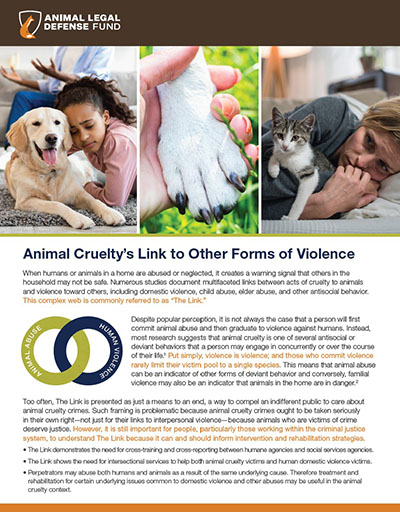In recent years, a disconcerting trend has emerged within American society: an escalating number of reports and incidents indicative of animal cruelty. This phenomenon is not merely a fleeting social aberration; it manifests as an intricate tapestry woven from multiple threads—socioeconomic factors, psychological influences, cultural attitudes, and legislative shortcomings. Understanding the underlying reasons behind this troubling trend is essential to initiate constructive discourse and promote genuine change in societal attitudes toward animal welfare.
To begin with, it is crucial to examine the role of socioeconomic status. Economic hardship often leads individuals to make choices driven by desperation. For many, the struggle to meet basic needs can overshadow the welfare of animals. As humans grapple with financial instability, their ability to empathize and care for animals diminishes. This shift in priorities can foster an environment where neglect proliferates and cruelty can subtly take root. Moreover, in households where resources are limited, the presence of animals may become a luxury or a burden, resulting in abandonment or mistreatment.
Furthermore, psychological factors cannot be overlooked. Mental health issues are prevalent in society and significantly influence behaviors towards others, including animals. Individuals experiencing untreated mental disorders may display signs of aggression or neglect, which can extend to pets and other animals. The distressing reality is that untreated trauma, emotional instability, and various psychological disorders can manifest in harmful behaviors toward animals, revealing a dire need for improved mental health services that encompass an understanding of animal welfare as a crucial component of holistic health.
Cultural attitudes also play a vital role in shaping perceptions of animals. The way societies view and value animals directly affects the treatment they receive. In cultures where animals are seen merely as property or utilitarian objects—tools for labor, food sources, or entertainment—moral considerations for their welfare may be non-existent. This perspective inextricably links capitalism and consumerism to animal exploitation, where profit supersedes compassion. In contrast, cultures that emphasize kinship with animals, recognizing their intrinsic value and rights, tend to see lower instances of cruelty. The challenge lies in shifting American cultural attitudes toward embracing empathy and stewardship regarding all living beings.
Additionally, the rapid advancement of technology and urbanization has introduced novel complexities into humanity’s relationship with animals. In a digital age, where virtual interactions often eclipse real-life experiences, the disconnect between people and their natural environments has increased significantly. Urban living can strip individuals of the innate connection to nature, resulting in a diminished sense of responsibility for living beings outside of the human sphere. This alienation not only breeds apathy but also perpetuates misunderstandings about animal needs and behaviors, opening a gateway for neglect and cruelty. Conversely, fostering a reconnection with nature and promoting educational programs could illuminate the ethical implications of animal treatment, sparking an essential change in behavior.
Moreover, the role of inadequate legislation must not be understated when discussing the rise in animal cruelty. While many states possess laws concerning animal welfare, enforcement often lags considerably behind. Effective legislation is vital to establish a clear framework for protecting vulnerable animals. However, laws can be inconsistent and may lack the necessary attention from law enforcement, leading to a culture of impunity. When individuals perceive that their actions toward animals will not be scrutinized or penalized, it can embolden cruel behaviors. Advocacy for stronger legal protections coupled with rigorous enforcement mechanisms is paramount to combating this dangerous trend.
Another dimension to explore is the media’s portrayal of animal cruelty. While sensationalized reports can serve to highlight issues needing attention, they can also desensitize the public to the problems at hand. When shocking images of suffering animals flood screens, individuals may experience a temporary emotional response but ultimately become numb to the ongoing crisis. Fostering a critical understanding of these representations is essential to cultivate genuine empathy and drive action. Documentaries and narratives focused on positive interspecies relationships can inspire proactive measures rather than passive observation.
Education emerges as an essential tool in addressing the complexities surrounding animal cruelty. By integrating animal welfare curricula into educational systems, communities can cultivate a new generation equipped with compassion and knowledge. Teaching children empathy towards animals fosters a broader understanding of ethical treatment, instilling values that extend into adulthood. Additionally, programs for adults—ranging from workshops to community outreach—can bridge knowledge gaps and provoke thoughtful discussions on animal rights, welfare, and humane treatment.
Lastly, fostering community engagement can revitalize the spirit of compassion toward animals. By crafting local initiatives, such as shelter support programs, volunteer opportunities, and community awareness campaigns, individuals can be galvanized to contribute actively to alleviating animal suffering. Building networks of support encourages collective responsibility and strengthens the advocacy movement, resulting in a more humane society.
In conclusion, the rising tide of animal cruelty in America is a multifaceted issue necessitating comprehensive analyses of socioeconomic factors, psychological dimensions, cultural attitudes, legislative frameworks, media representations, education, and community engagement. Acknowledging these interconnected elements paves the way for transformative change. Through collective awareness and concerted efforts, there lies the promise of a paradigm shift in how society perceives and treats its most vulnerable sentient beings. The journey towards a future characterized by compassion and respect for animals is arduous, yet it is a path worth pursuing for the collective conscience and moral integrity of society.










